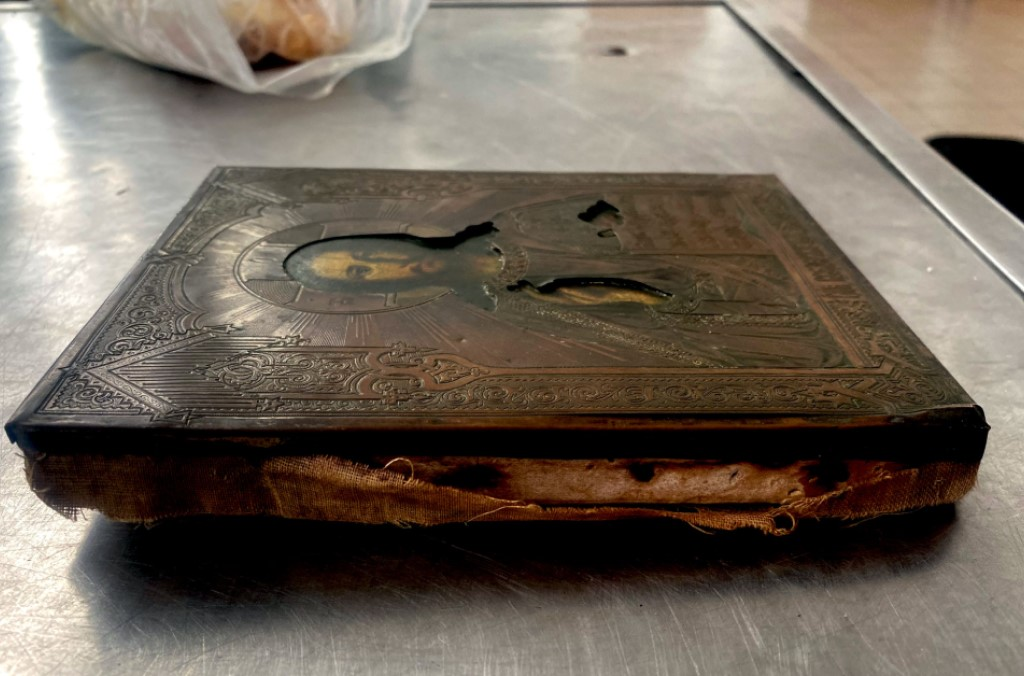by Eirini Polydorou
80 arrests and the recovery of 37.727 stolen cultural items was the result of the investigations of the authorities on 258 different cases of illicit trafficking of cultural goods, as said in Europol's press release.
These cases were investigated throughout 2024, in the context of the ninth edition of the Pandora Operation. Pandora was intially launched in 2016 as an annual collaboration between Europol, Interpol and the WCO to combat cultural property crime.
Seized goods of Pandora IX edition included archaeological artefacts, heritage jewelry, musical instruments, paintings, ceramics, icons and coins, as well as 69 metal detectors and 23 tools of common use for illegal excavations.
The 2024 edition of Pandora was coordinated by Spanish Guardia Civil and involved investigators, customs and law enforcement officials from 23 countries.
Police officials expect further arrests and seizures, since there are more investigations still in progress.
Retrieved Punic and Roman Artefacts were to be Sold Online
In Spain, the Guardia Civil officials arrested six individuals and seized 2500 archaeological items, mainly Roman coins. The artefacts originated from the Celtiberian city of Tamusia and were looted from protected archaeological sites in the area of Cáceres. These artefacts were on sale through social media platforms.

In Italy, the investigators of the Italian Carabinieri Command for the Protection of Cultural Heritage (TPC) found in a private apartment more than 300 metal and ceramic artefacts of cultural heritage, including Roman and Punic arrowheads, spearheads and coins. These items were also offered for sale on digital platforms.
Pandora IX Highlights
In Spain, Pandora IX investigators retrieved 64 historical items and 1576 ancient coins. This was the outcome of investigations on a passenger attempting to fly from Palma de Mallorca to Germany carrying 55 ancient coins and a ring. The case led to an indictment for crimes against cultural heritage and plundering underwater wrecks and archaeological sites.
In Greece, three individuals were arrested in an attempt to sell five Byzantine icons for €70.000. This arrest resulted from the works of the Department of Cultural Heritage and Antiquities of Athens, employing special intelligence and investigative techniques, including an undercover officer.
In Ukraine, 87 cultural items were retrieved by the customs authorities before their illegal transport to Poland, Moldova and Romania. Among these, there were two icons of Saint Seraphim of Sarov. They were found in the luggage of a bus passenger, after an inspection at the border with Poland (following image).

The Italian Customs and Monopolies Agencies worked on a joint border operation and seized a painting attributed to the renown artist Jannis Kounellis. The value of the painting would be estimated around €100.000, yet after inspection it was determined that the item was not authentic.
Cyber-patrols to Investigate Online Illicit Trafficking of Cultural Goods
Apart from the on-site investigations, the Pandora IX operation also organized cyber patrols to track cases of illegal sales of cultural goods online. The outcome of these virtual investigations was the seizure of 4.298 cultural items.
Background
The ninth edition of Pandora was implemented in the context of the European Multidisciplinary Platform Against Criminal Threats (EMPACT).
The participating countries for 2024 were: Albania, Austria, Belgium, Bosnia & Herzegovina, Bulgaria, Czech Republic, France, Germany, Greece, Ireland, Italy, Malta, Moldova, Netherlands, North Macedonia, Norway, Poland, Portugal, Romania, Serbia, Spain, Ukraine and the United States.
Operation Pandora was launched in 2016 to promote global collaboration against illicit trafficking of cultural goods, as a collaboration between Europol, Interpol and the World Customs Organisation.
Find more here
Images 1 & 2 & 3 @Interpol.
Image 1 features one of the 36 coins found by Ukraine Customs.
Image 2 features part of the 2500 items found by Spanish Guardia Civil.
Image 3 features icon of Saint Seraphim of Sarov found by Ukraine Customs.










